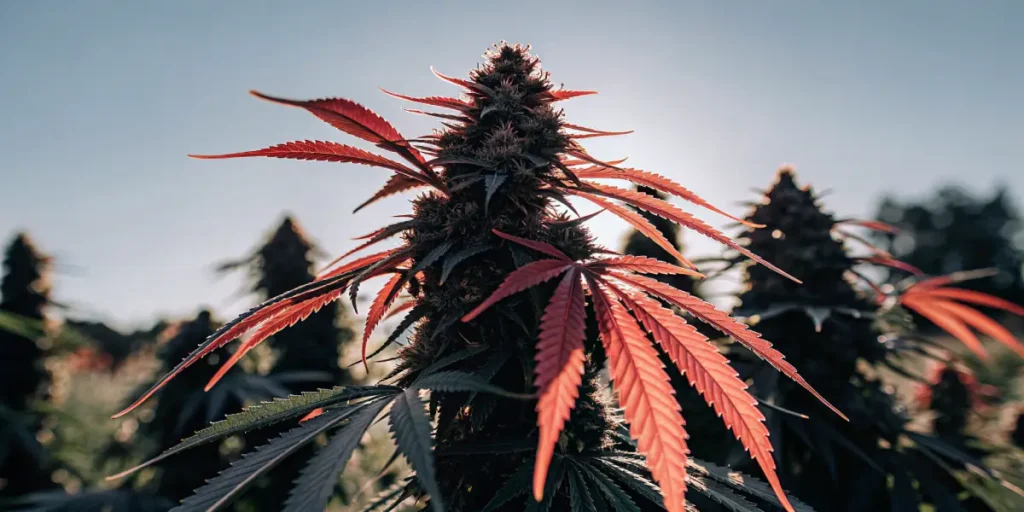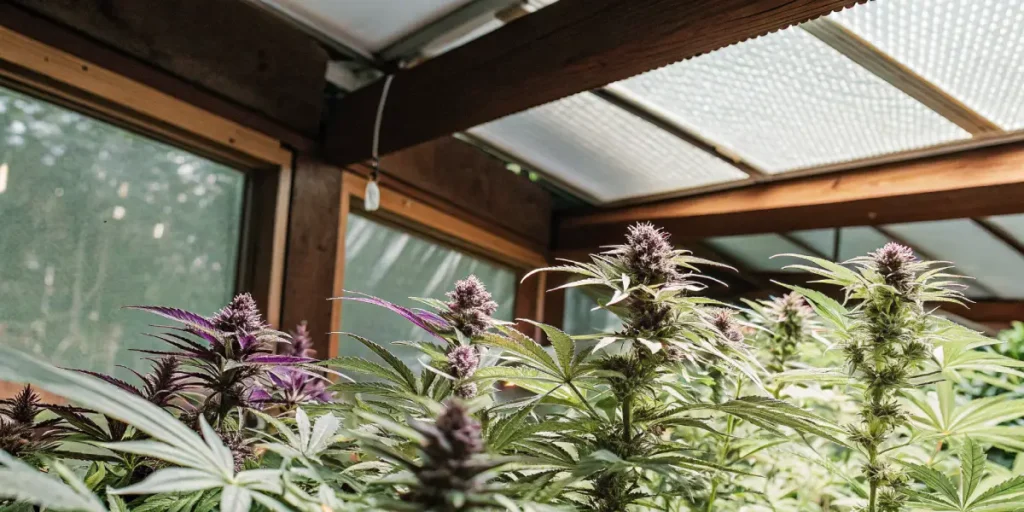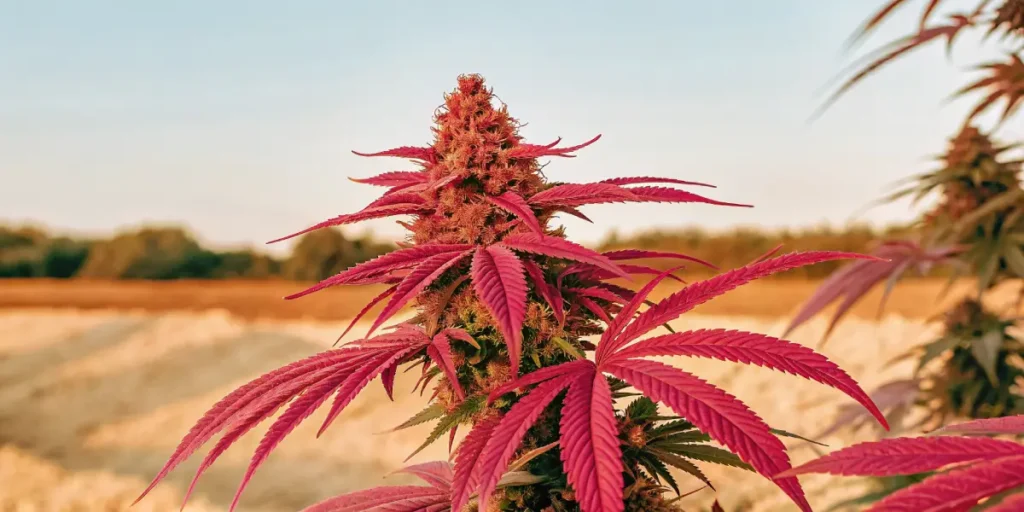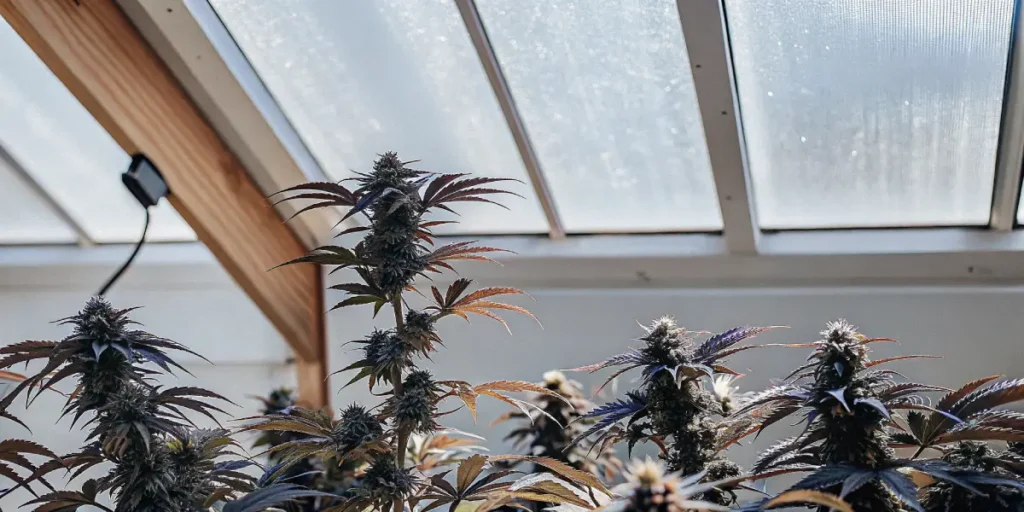Growing Shaman, a popular cannabis strain known for its resilience and energizing effects, can be an enjoyable and rewarding process for both novice and experienced growers. This guide will walk you through the essential steps to successfully cultivate Shaman, ensuring you achieve a healthy and fruitful harvest. Knowing the unique characteristics of this strain will provide a good starting point, as Shaman is known for its resistance to mold and pests, making it ideal for outdoor and greenhouse cultivation.
The first step in growing Shaman is selecting the right growing medium. This strain can thrive in both soil and hydroponic systems. If you choose soil, ensure it’s rich in organic matter and well-draining to promote healthy root development. For hydroponic systems, use a high-quality nutrient solution that adequately supports the plant’s growth stages. Seed germination is a critical phase; start by soaking Shaman seeds in water for 24 hours before placing them in a damp paper towel inside a plastic bag. Keep them in a warm, dark area until they sprout.
Once the seedlings have sprouted, it’s time to transfer them to their final growing location. If growing outdoors, wait until after the last frost and plant them in a site that receives plenty of sunlight. In an indoor setup, use LED grow lights to provide the necessary light spectrum. Maintain a warm temperature between 68-77°F (20-25°C) and a humidity level of around 40-60% to ensure optimal growth. Frequent monitoring of these conditions is key to preventing issues like nutrient deficiencies or pest infestations.
Pruning and training are useful techniques to enhance the growth of Shaman. Regularly remove any yellowing leaves and dead branches to focus energy on the healthier parts of the plant. Methods such as low-stress training (LST) and topping can help maximize indoor space and increase yields. Shaman typically flowers within 7-9 weeks, and during this period, it is imperative to monitor the plants closely, checking for pests or signs of mold, even though this strain is naturally resistant.
Harvesting Shaman at the right time is crucial for potency and flavor. Check the trichomes with a magnifying glass; when they turn from clear to a milky color with some turning amber, it is the optimal harvest time. After harvesting, hang the buds upside down in a dark, well-ventilated space to dry. Curing is the final step and involves placing the dried buds in airtight containers, opening them occasionally to release moisture and enhance flavor and aroma. With patience and proper care, you’ll enjoy a bountiful harvest of Shaman cannabis.
Shaman Strain Overview: Traits, Effects & Genetics
The Shaman strain is a unique and intriguing cultivar in the cannabis world, known for its striking appearance and fascinating genetic lineage. Shaman is a sativa-dominant hybrid, boasting a lineage that hails from two classic strains: Purple #1 and a top quality Skunk. This blend results in a plant that is robust and versatile, well-suited for both indoor and outdoor cultivation. Its adaptability makes it a favorite among growers of various expertise levels, as it can thrive in a variety of climates and growing conditions.
One of the most notable traits of the Shaman strain is its vibrant purple hues that often develop during the flowering phase. These eye-catching colors, paired with its long and slender sativa-like leaves, give Shaman an aesthetically pleasing appearance. The plant typically flowers in about 8 to 9 weeks, producing moderate yields of dense, resinous buds that emit a sweet and fruity aroma, reminiscent of its Skunk parentage.
When it comes to effects, Shaman is revered for its uplifting and cerebral qualities. As a sativa-dominant strain, it tends to offer an energetic and euphoric high, making it ideal for daytime use when creativity and social interaction are desired. Consumers often report feeling more focused and inspired, which can be perfect for both artistic endeavors and tackling everyday tasks. Despite its potency, Shaman is also valued for its gentle, soothing comedown, which allows for pleasant relaxation without overwhelming sedation.
Genetically, Shaman’s composition is a testament to careful breeding and hybridization. Purple #1, one of its parent strains, contributes to its resilience and distinctive coloring, while the Skunk 1 influence enhances its aromatic profile and adds a layer of potency. This combined lineage ensures that Shaman possesses not only an attractive appearance but also a well-rounded and enjoyable cannabis experience. Overall, Shaman is a standout strain that continues to win the hearts of both growers and consumers alike.
Optimal Environment to Grow Shaman Successfully
Shaman, a popular cannabis strain known for its resilience and distinctive characteristics, thrives in specific environmental conditions that cultivators must replicate to ensure optimal growth. This strain is particularly favored for its adaptability to various environments, making it a robust option for both novice and experienced growers. However, to maximize yields and quality, it’s essential to understand the ideal conditions that facilitate the successful cultivation of Shaman. The following guidelines outline crucial aspects of creating the perfect growth environment for this remarkable strain.
First, temperature plays a critical role in the successful cultivation of Shaman. This strain flourishes in moderate climates, preferring temperature ranges between 20-28°C (68-82°F). Consistent temperature control is vital, as fluctuations can stress the plants, leading to reduced yield and potency. If you’re growing indoors, invest in a reliable thermostat to maintain a stable climate. Outdoors, selecting a season with stable weather and avoiding extremes can induce healthier growth.
Besides to temperature, humidity levels significantly impact Shaman’s development. During the vegetative stage, maintain humidity levels between 40-70%, gradually decreasing to 30-50% in the flowering stage to prevent mold and mildew, which can potentially ruin the crop. Controlled ventilation is equally important as it regulates humidity and temperature, and strengthens the plant structure by mimicking natural wind conditions. This encourages sturdy stem development, increasing the plant’s resilience.
Lighting is another critical factor when growing Shaman, particularly for indoor cultivation. Shaman benefits from a well-balanced light spectrum. During the vegetative phase, provide ample light with a preference for blue spectrum lights to promote leaf growth. As it transitions into the flowering stage, shift to red spectrum lights to support bud development. A cycle of 18 hours of light followed by 6 hours of darkness is ideal during vegetation, shifting to a 12-12 cycle during flowering to simulate natural seasonal changes.
Finally, soil quality and nutrients are fundamental to the health and vitality of Shaman plants. A well-draining soil with a balanced pH level of 6.0-7.0 is optimal, as it allows for efficient nutrient uptake. Regular monitoring and adjustment ensure nutrients reach the plant effectively, enhancing growth. Organic fertilizers rich in nitrogen, phosphorus, and potassium are recommended, adjusting the ratio as the plant progresses through its growth stages to meet its changing nutritional needs.
Grow Room Setup for Shaman Plants
Successfully cultivating shaman plants—a type often chosen by enthusiasts for its unique characteristics—requires careful attention to the grow room setup. Primarily, ensuring the correct environmental conditions is vital to mimicking the natural habitat where these plants thrive. This begins with selecting an appropriate space that provides adequate room for vertical and lateral growth. A dedicated grow tent or room, isolated from external environmental influences like fluctuating light and temperature, is ideal to maintain control over the growing conditions.
Lighting is a critical component when setting up your grow room for shaman plants. These plants demand a light cycle that promotes healthy photosynthesis and bloom stages. High-Intensity Discharge (HID) lights or LED grow lights are frequently recommended due to their ability to provide the full spectrum of light necessary for robust plant development. Ensure the light source is evenly distributed, providing consistent illumination without creating hot spots, and maintain a distance that prevents scorching while maximizing light absorption.
Temperature and humidity management also play crucial roles in the success of cultivating shaman plants. Aim for a consistent temperature range between 70-85°F (21-29°C) during the day and a slight drop during the night to mimic natural conditions. Humidity levels should initially be set higher, around 70%, during the seedling phase and gradually decreased to about 40-50% in the flowering stage. Utilize thermostats and hygrometers, alongside heating and cooling devices, to fine-tune these parameters consistently.
Moreover, airflow and ventilation must not be overlooked in your grow room design. Proper air exchange prevents mold and mildew while ensuring a supply of fresh CO2, essential for photosynthesis. This can be achieved via oscillating fans to promote air circulation and exhaust fans to expel stale air, ensuring a dynamic and healthy growing environment. Position these systems strategically to cover all areas of the grow room, accommodating the plant’s need for movement similar to natural winds, which also aids in developing sturdier stems.
Lastly, considerations should be made for the control of potential pests and diseases. Install pest barriers and keep a clean environment to mitigate the risks sought by common indoor pests. Hydroponic or soil mediums must be kept sterile, and the grow space should be cleaned regularly to hinder the development of any infestations. By combining meticulous environmental setup and maintenance strategies, you provide shaman plants with the optimal conditions needed for a fruitful growing cycle.
Indoor Growing Tips for Shaman
Shaman, a unique and resilient cannabis strain, is well-suited for indoor cultivation due to its manageable size and strong adaptability. Its sativa-dominant genetics offer a blend of high-energy and enhancement of creativity. When growing Shaman indoors, it’s crucial to carefully regulate the environment to replicate the ideal conditions of its natural habitat. This strain thrives in a warm climate, mimicking the sunlit warmth and balanced humidity levels. Indoor growers must hence focus on providing sufficient consistent light and maintaining a controlled climate.
Lighting is one of the most crucial components in cultivating Shaman indoors. Use high-intensity discharge (HID) lights, such as Metal Halide for the vegetative stage and High-Pressure Sodium for flowering. These lights offer a robust spectrum needed for cannabis plants to thrive. Providing 18-24 hours of light during the vegetative stage is optimal for promoting healthy, lush growth. As Shaman transitions into flowering, reduce the light schedule to 12 hours to trigger the plant’s natural flowering hormones, ensuring a bountiful yield.
Proper air circulation and ventilation are essential when growing Shaman indoors, as it helps prevent mold and mildew, which the plant can be somewhat susceptible to. Consider installing exhaust fans and oscillating fans to maintain optimal airflow across the plant canopy. Additionally, maintain a balanced temperature between 70-85°F (21-29°C) during the day and slightly cooler at night to mimic natural conditions. Monitoring humidity levels is also critical, aiming for 40-50% during the vegetative phase and reducing to 30-40% in flowering.
Feeding and watering are key aspects of Shaman’s indoor cultivation. This strain prefers a balanced nutrient mix with slightly elevated levels of phosphorus and potassium during flowering to enhance bud production. Ensure your feeding schedule corresponds with the plant’s growth stage, being cautious not to over-fertilize, which can cause nutrient burn. Use clean, pH-balanced water and follow a regular watering schedule, allowing the soil to dry out slightly between watering to prevent root rot and promote strong root development.
Besides to environmental control and nutrition, regular plant training techniques can also be beneficial for Shaman’s indoor growth. Techniques such as topping, low-stress training (LST), and ScrOG (Screen of Green) can effectively manage plant height and maximize light exposure, encouraging a bushier profile with more bud sites. Regular pruning and removal of lower fan leaves can also improve airflow and light penetration, contributing to an overall healthier plant and increased yield.
Outdoor Growing Tips for Shaman
Shaman is a resilient cannabis strain known for its adaptability to outdoor conditions and its resistance to common plant diseases. When embarking on outdoor cultivation of Shaman, selecting the right location is paramount. Choose a site that receives ample sunlight, ideally 12-16 hours per day, as Shaman thrives in bright, well-lit environments. Ensuring your plants receive adequate light not only promotes vigorous growth but also maximizes the plant’s resin production, crucial for its psychoactive properties.
Soil preparation is another critical aspect to consider when growing Shaman outdoors. Well-draining soil with high organic matter is ideal for this strain. You can enrich your garden soil by mixing it with compost or worm castings, which provide essential nutrients and improve soil structure. Additionally, testing the soil pH is advisable; Shaman prefers a pH level between 6.0 and 7.0 to ensure optimal nutrient uptake. Regular monitoring and amendment might be necessary to maintain the desired pH range throughout the growing season.
Watering is a vital component of outdoor cannabis cultivation. Shaman requires consistent but not excessive watering. Overwatering can lead to root rot and other water-related issues. Implementing a deep watering schedule, especially during dry periods, ensures the roots absorb enough moisture without becoming waterlogged. Mulching around the base of the plants can help retain soil moisture and regulate temperature, especially during hot spells.
Pruning and regular maintenance are essential for promoting healthy airflow and light penetration through the foliage of Shaman plants. By removing dead leaves and unnecessary growth, you can minimize the risk of pest infestations and mold, commonly associated with dense foliage. Additionally, staking the plants can provide support against strong winds, particularly in regions prone to heavy gusts, ensuring that the plants do not suffer from physical damage as they mature.
Lastly, be attentive to the local climate and pest challenges. Shaman exhibits natural resilience to mold and mildew, but additional protections may be necessary in particularly humid areas. Integrated pest management (IPM) techniques, such as introducing beneficial insects or using natural pest repellents, can provide effective defense against common garden pests like aphids or spider mites, securing a successful harvest.

How to Germinate & Propagate Shaman
Shaman is a robust and versatile cannabis strain known for its resilience and distinctive purple hues. Germinating and propagating this strain requires careful attention to detail to ensure healthy plant growth. The germination process begins with obtaining high-quality seeds from a reputable source. This ensures the seeds have optimal genetics, which is crucial for successful growth. Once acquired, consider using the paper towel method, a simple and effective technique that involves placing seeds between two damp paper towels and keeping them in a warm, dark place until they sprout.
After sprouting, which typically takes a few days, prepare a seedling mix or a rooting medium like rock wool cubes. Carefully transfer the germinated seeds into the medium, ensuring not to damage the fragile roots. This stage requires maintaining a balance between moisture and aeration, as excess water can lead to root rot while insufficient moisture can cause dehydration. The seedlings should be kept at a temperature between 70-77°F (21-25°C) and under a gentle light source to encourage healthy growth until they are strong enough to be moved to a more substantial growing environment.
Propagation involves nurturing young plants to maturity, ensuring they receive the ideal balance of nutrients, light, and water. As Shaman is an outdoor-friendly strain, consider initially growing your plants indoors where you have better control over the environment before transferring them outdoors. Regularly monitor pH levels to ensure they remain between 6.0 and 7.0 and feed the plants with a balanced nutrient solution. Through careful oversight and maintenance, Shaman can be successfully propagated, producing visually striking plants with rich purple buds that are well worth the effort.
Pruning is also a crucial part of propagating Shaman. Removing excess leaves and branches allows more light to penetrate the plant canopy, promoting better air circulation and reducing the risk of mold and pests. As Shaman grows, keeping a watchful eye for signs of stress or nutrient deficiencies is vital. Keeping a log can help track watering, nutrient schedules, and any changes in the plant’s appearance. Diligent care in the germination and propagation stages will lead to a prosperous crop, fully showcasing the iconic characteristics of the Shaman strain.
Vegetative Stage: Nurturing Your Shaman Plants
The vegetative stage is a crucial phase in the lifecycle of your Shaman cannabis plants, setting the foundation for a healthy and productive flowering stage. During this period, your primary focus should be on establishing a robust plant structure, which will later support heavy buds. The Shaman strain, known for its resilience and vibrant growth, thrives in environments that adeptly cater to its needs during the vegetative phase. Ensuring optimal light, nutrients, and environmental conditions will promote vigorous growth and contribute to the plant’s overall health.
Light is a fundamental factor during the vegetative stage, and Shaman plants demand abundance. Aim to provide 18-24 hours of bright, consistent light each day using either compact fluorescent lights (CFLs) or LEDs, which are energy-efficient and provide the full spectrum of light necessary for growth. Sufficient exposure to light encourages photosynthesis, allowing plants to develop lush foliage and sturdy stems. Be mindful to position lights appropriately, avoiding light burn to the tender leaves while ensuring they’re not too far away, which can lead to stretched and weak branches.
The nutrient regimen during the vegetative phase should be carefully balanced to meet the plant’s growth demands. Shaman plants benefit from a higher nitrogen content, as nitrogen is essential for developing strong, green vegetative growth. Use a quality vegetative-stage fertilizer and maintain a regular feeding schedule. Always follow the manufacturer’s guidance, as over-fertilization can lead to nutrient burn, observable as browning leaf tips, which can stunt growth and vitality.
Effective watering practices are vital to nurturing your Shaman plants. Overwatering and underwatering can both stress the plant, impacting its health and development. Ensure your growing medium retains moisture while allowing for good drainage to prevent root rot. A simple way to gauge watering needs is to check the top inch of soil; if it feels dry, it’s time to water. Additionally, maintaining proper humidity and air circulation will deter mold and mildew, encouraging healthy foliage during this vegetative phase.
Training techniques such as topping, low-stress training (LST), or using a screen of green (ScrOG) can significantly benefit your Shaman plants during the vegetative stage. These methods help in creating an even canopy, ensuring all parts of the plant receive equal light and promoting a higher yield potential. Be gentle with your techniques to avoid undue stress and breakage, allowing your Shaman plants the opportunity to thrive and maximize their growth potential before entering the flowering stage.
Flowering Shaman: What to Expect
The flowering stage is a pivotal moment in the growth cycle of the Shaman cannabis strain, a hybrid known for its resilience and unique characteristics. Once your Shaman plants transition from the vegetative phase, you can expect exciting changes over the next eight to ten weeks. During this period, your plants will develop the lush, aromatic buds that are a hallmark of this strain. Recognizing the signs of flowering will help ensure you’re providing the optimal conditions for a successful harvest.
Initially, you’ll notice pre-flowers forming at the nodes where the leaves join the stalk. For Shaman, a strain celebrated for its purple hues, you might observe these shades emerging. This is also when you will opt to determine the plant’s sex, ensuring male plants are swiftly removed to prevent them from pollinating female plants. The Shaman’s resilience means it’s adept at combating some common pests and diseases, although regular monitoring is essential for maintaining plant health.
As weeks progress, the Shaman’s distinct aroma will intensify. The budding process accelerates, with buds swelling and developing prominent trichomes. These trichomes are crucial indicators of the plant’s potency and readiness for harvest as they mature from clear to milky, and eventually amber. Throughout the flowering stage, temperature and humidity must be carefully managed. Aim for cooler temperatures to encourage vibrant coloring and reinforce trichome production while maintaining slightly lower humidity levels to prevent mold growth on the dense buds.
Nutrient regimens will also shift during flowering. The Shaman requires increased phosphorus and potassium to fuel bud development, so adjust feeding schedules accordingly. Consider supplementing with bloom enhancers to achieve denser buds. Finally, as the flowering period nears its end, establish a flushing routine to clear the plant of excess nutrients, leading to a smoother flavor profile post-harvest. By monitoring these factors closely, you’ll maximize the Shaman’s yield, revealing a rewarding bloom full of this strain’s distinctive qualities.
Feeding shaman: Fertilizers & Nutrient Schedule
Feeding your Shaman cannabis plants the right balance of nutrients is crucial for achieving optimal growth and maximizing yield. Shaman, known for its resilience and robust growth profile, requires a carefully structured nutrient schedule to support its unique genetic qualities. The foundation of this feeding regimen rests on the basic three macronutrients: nitrogen, phosphorus, and potassium, commonly referred to as NPK. Each of these plays a critical role at different growth stages, ensuring your plants thrive from seedling to harvest.
During the vegetative phase, Shaman plants crave higher levels of nitrogen to support lush, robust foliage development. This is when photosynthesis is in full swing, and leafy growth is most vigorous. A nutrient solution with a higher proportion of nitrogen, such as a 3-1-2 ratio, can be applied every week or bi-weekly, depending on the plant’s growth response and vigor. However, it’s essential to monitor your plants closely for signs of nutrient burn or deficiency to adjust the feeding schedule accordingly.
As your Shaman plants transition into the flowering stage, their nutritional needs shift significantly towards phosphorus and potassium. These nutrients are crucial for bud development, enhancing flowering capacity and increasing plant resilience. During this phase, a nutrient formula such as 2-4-4 can offer a balanced diet, ensuring optimal flowering and resin production. Again, keen observation is necessary to prevent any nutrient imbalances that could stress the plants or stunt their growth.
Besides to these primary nutrients, Shaman cannabis also benefits from secondary nutrients like calcium, magnesium, and sulfur, as well as trace elements including manganese, iron, and zinc. These micronutrients support various physiological functions critical for overall plant health. Always consider using a comprehensive cannabis nutrient mix that covers both primary and micronutrients, especially if relying on soil or hydroponics as your growing medium.
Finally, remember that nutrient needs can vary based on several factors, including growth conditions, soil quality, and the overall health of your Shaman plants. Regular pH and EC measurements help in refining the nutrient uptake process, ensuring your plants are neither underfed nor overfed. Crafting a tailored nutrient schedule, along with diligent monitoring and timely adjustments, ensures your Shaman cannabis grows to its full potential, offering a rewarding yield of high-quality buds.
Pest and Disease Prevention for Healthy Cannabis Plants
Maintaining the health of your cannabis plants is crucial for achieving a fruitful harvest. One of the most significant challenges growers face is the prevention and management of pests and diseases. By adopting preventative strategies, you can protect your plants from potential threats that could compromise their well-being. This involves creating an environment that discourages pests and pathogens, alongside regularly monitoring your plants for early signs of infestations or disease. By integrating cultural, mechanical, and biological control methods, you can effectively minimize the risk of harm to your cannabis plants.
The first step in pest and disease prevention is maintaining a clean growing environment. It is essential to keep your growing area free from debris and fallen leaves that can harbor pests and pathogens. Regularly sanitizing tools, pots, and equipment will help reduce the chance of cross-contamination. Additionally, ensure that there is adequate spacing between plants to enhance airflow, which decreases humidity levels that are conducive to mold and mildew formation. A well-ventilated space discourages fungal growth and keeps pests like spider mites and whiteflies from thriving.
Incorporating beneficial insects is a natural and sustainable approach to pest prevention. Predators such as ladybugs, predatory mites, and parasitic wasps can control common cannabis pests, providing a first line of defense without the need for harmful chemicals. Additionally, introducing companion plants can attract beneficial insects while repelling harmful pests. For example, planting marigolds alongside your cannabis can deter nematodes, while basil can help repel thrips and aphids.
Regular monitoring and early detection are crucial in managing pests and diseases. Inspect your cannabis plants closely, paying attention to the undersides of leaves where pests like to hide. Look for signs such as discolored spots, wilting, or unusual growth patterns. The use of yellow sticky traps can help in identifying and controlling flying pest populations. At the first sign of trouble, take immediate action by isolating affected plants and treating them with natural remedies, such as neem oil or insecticidal soap, to prevent further spread.
Finally, selecting disease-resistant cannabis strains can go a long way in mitigating potential problems. Before choosing a strain, research its susceptibility to common diseases and ensure its suitability to your specific growing conditions. By combining these preventive practices, you not only safeguard your plants but also promote vigorous growth and potent yields, ensuring a successful cannabis growing journey.

Harvesting & Drying Shaman the Right Way
Shaman is a unique cannabis variety known for its resilience and striking purple hues. Harvesting this plant correctly is crucial to unlocking its full potential, ensuring you experience its renowned flavor and effects. The ideal harvest time for Shaman is when 70-80% of the pistils have darkened, and the trichomes have a milky white appearance; this ensures optimal potency and flavor. Growers should observe their plants closely as harvest time approaches, using magnification tools to check trichome maturity for the best results.
Timing your harvest is only part of the equation; the technique is equally important. Begin by cutting the plant at its base, preserving the contiguity of the branches. This practice ensures better airflow during the drying process. Once your Shaman plant is harvested, carefully remove large fan leaves, but retain many of the sugar leaves to protect the delicate trichomes during the drying phase. This balances protection with airflow and helps curb excessive moisture, which could lead to mold development.
Proper drying is paramount to preserving Shaman’s unique qualities. This process generally takes 10 to 14 days. Hang the branches upside down in a dark environment with temperatures maintained between 60-70°F (15-21°C) and humidity levels around 50%. Adequate spacing between branches and consistent airflow prevent mold and mildew while allowing the cannabis to dry evenly. Check the progress frequently; Stems should snap rather than bend to indicate readiness for the next stage: curing.
Curing allows Shaman’s terpene profile to mature, enhancing its flavor and aroma. Post-drying, trim the buds and place them in airtight containers, opening them daily for the first few weeks to release any excess moisture – a practice known as “burping”. Over time, this controlled environment of curing jars can significantly improve quality and shelf life. With precise harvesting and meticulous drying methods, growers can elevate Shaman’s aromatic and psychoactive properties, achieving a truly rewarding harvest.
Shaman Strain Type: Indica, Sativa or Hybrid?
The Shaman strain is a fascinating variety within the cannabis world, often recognized for its unique lineage and balanced characteristics. Classified predominantly as a Sativa-dominant hybrid, Shaman brings together the desirable traits of both Indica and Sativa strains. This combination results in a dynamic experience, offering users a blend of cerebral stimulation alongside a modest relaxation of the body. Its genetic profile includes a mix of early Skunk and a potent Purple #1, marking it as a well-regarded improvised blend within the cannabis community.
Being a Sativa-dominant hybrid, Shaman typically showcases the traditional attributes of Sativa strains. Users can expect an uplifting and euphoric high that is often associated with improved moods and increased creativity. Despite its dominance in Sativa traits, the Indica lineage is not entirely overshadowed. The gentle Indica influence provides a subtle calming effect, which balances the energetic buzz with a sense of tranquility and ease, making it suitable for both recreational and some therapeutic uses.
The Shaman strain’s growth characteristics also highlight its hybrid nature. Gardeners often appreciate Shaman for its resilience and adaptability, typical of hybrid vigor. It tends to be a robust plant capable of withstanding various environmental factors. The strain grows lean and tall, a trait it inherits from its Sativa parentage, and its flowering phase is marked by aesthetically pleasing purple hues, which are eye-catching and indicative of its Purple #1 ancestry. This not only makes it a practical choice for cultivators but also an attractive addition to any grow space.
Overall, Shaman represents a harmonious blend of Indica and Sativa properties, predominantly leading towards the latter, making it an ideal choice for those seeking a versatile high. Its ability to offer a comprehensive cannabis experience without overwhelming the user positions Shaman as a favorite among those who appreciate layered and nuanced strains. Whether you’re cultivating for personal use or commercial purposes, understanding Shaman’s hybrid nature is key to optimizing both its growth and its effects.
Why Grow Shaman? Key Benefits for Cultivators
Shaman is a revered choice among cannabis cultivators due to its unique attributes and versatility. One of the primary reasons to grow Shaman is its robust resilience against various environmental challenges. This strain is particularly well-suited for outdoor cultivation, attributed to its strong resistance to fluctuations in temperature, humidity, and pests. Its ability to thrive in less-than-ideal conditions makes it an excellent choice for growers residing in unpredictable climates or those opting for a low-maintenance crop.
Another significant advantage of cultivating Shaman is its appealing genetic lineage. Originating as a cross between Purple #1 and Skunk, Shaman inherits the best traits from both parent strains. This results in a plant that consistently produces high-quality buds characterized by vibrant colors and a distinctive, pleasant aroma. The strain’s aesthetic appeal, combined with its potent effects and balanced cannabinoid profile, makes Shaman highly desirable among both cultivators and consumers alike.
Furthermore, Shaman is known for its relatively short flowering time, usually needing around 8 to 9 weeks to reach maturity. This short growth cycle allows growers to achieve multiple harvests throughout the year, particularly in regions with longer growing seasons. The ability to turn around crops quickly is a significant economic advantage, particularly for commercial cultivators looking to maximize yield and return on investment. It also provides a quicker path to satisfaction for personal growers seeking a steady supply of their own harvest.
Besides to its tangible benefits, Shaman offers a more intangible appeal through its versatility in both recreational and medicinal circles. With moderate to high THC levels and a notable presence of CBD, Shaman can provide a balanced high that caters to diverse user needs. Its calming effects combined with mood-enhancing properties make it suitable for daytime use. Cultivators benefit from growing a strain that meets a wide spectrum of consumer preferences, enhancing its marketability and personal enjoyment.
Potential Challenges When Growing Shaman
Growing Shaman cannabis, known for its unique genetic profile and vibrant characteristics, can present specific challenges that growers should be prepared to address. One of the primary concerns is its sensitivity to environmental conditions, particularly temperature and humidity. Shaman thrives in a stable climate, and fluctuations can lead to stress or stunted growth. Therefore, maintaining consistent environmental parameters is crucial. Growers must invest in good quality climate control systems to ensure their crop remains healthy and capable of producing high yields.
Pest control is another significant challenge when growing Shaman. This strain can be susceptible to common cannabis pests, such as spider mites, aphids, and fungus gnats. These pests can cause extensive damage to crops, resulting in reduced yields and compromised plant health. Regular inspections and the use of integrated pest management (IPM) strategies, which include biological controls and organic treatments, are essential for preventing and managing pest infestations. Early detection and appropriate control measures will help in preserving the health of the plants.
Nutrient management can also pose challenges when cultivating Shaman. This strain requires a balanced nutrient supply to achieve optimal growth and flowering. However, over-fertilization can lead to nutrient burn or toxicity, while under-fertilization might stunt growth or cause deficiencies. Ensuring a balanced and consistent feeding schedule, alongside regular soil or substrate testing, can help prevent nutrient-related issues. It’s crucial for growers to adjust the nutrient regimen according to the plant’s specific growth stages to promote robust growth and abundant flowering.
Besides to environmental and biological challenges, Shaman plants require careful training and pruning to support their growth structure. Given its sativa-dominant nature, it can stretch significantly during the flowering stage, making space management critical. Implementing techniques like topping or low-stress training (LST) can help manage plant height and light exposure. This will not only support the canopy but also encourage the production of more robust and resinous buds, ultimately enhancing the quality and yield of the harvest.
Is Shaman Worth Buying? Here’s What You Need to Know
Shaman is a cannabis strain that has gained fame among both novice and experienced growers due to its unique qualities and adaptability. Originating primarily from a cross between Purple #1 and Early Skunk, Shaman promises a robust and pest-resistant growth, making it an attractive choice for those new to cannabis cultivation. Its high resilience to mold and pests is a key selling point, particularly for those dealing with unpredictable climates. The plant thrives in both indoor and outdoor settings, offering flexibility to growers with varying cultivation setups.
One of the major appeals of Shaman is its distinctive and vibrant appearance, often showcasing hues of purple and deep green as the buds mature. This aesthetic appeal can enhance the visual charm of a garden, making it a nice addition for those who appreciate the beauty of their plants beyond just the yield. In terms of aroma, Shaman offers a blend of earthy and sweet scents, which translates into a pleasant smoking experience. The effects are typically uplifting and energetic, making it ideal for daytime use and social settings.
When considering whether Shaman is worth purchasing, it’s essential to evaluate what you prioritize in a cannabis strain. If ease of growth, pest resistance, and a visually stunning plant are high on your list, Shaman might prove to be an excellent investment. Additionally, it generally offers a moderate yield, sufficient for personal consumption but might not meet the expectations of growers seeking large-scale harvests. Therefore, assessing your specific goals as a cultivator will guide you in determining if Shaman aligns with your expectations.
It’s also worth noting that Shaman, as with many other specialized strains, requires attention to detail in its care and nurturing to produce optimal results. Proper soil, light exposure, and watering schedules are crucial to maximizing both the aesthetic and yield potential of this strain. Overall, Shaman offers a rewarding cultivation experience, blending ease and visual appeal with a satisfying final product. For those ready to embrace the characteristics it brings, Shaman is indeed worth considering adding to your growing selection.

FAQs about Shaman
What is the ideal environment to grow Shaman strain?
The Shaman strain thrives in moderate climates with temperatures between 68–82°F (20–28°C) and humidity levels of 40–60%. It performs exceptionally well outdoors or in greenhouses due to its natural resistance to mold and pests. For indoor setups, maintain strong airflow and full-spectrum LED lighting, with a pH between 6.0–7.0 for balanced nutrient absorption.
How long does Shaman strain take to flower?
Shaman typically flowers within 8 to 9 weeks under controlled indoor conditions. Outdoor growers can expect to harvest around early to mid-October, depending on climate. Maintaining slightly cooler temperatures during late flowering enhances its purple pigmentation and trichome production, resulting in denser, more aromatic buds.
What nutrients does Shaman need during its growth cycle?
During the vegetative stage, Shaman benefits from a nitrogen-rich fertilizer (around 3-1-2 NPK) to promote vigorous foliage. As it transitions to flowering, switch to a phosphorus- and potassium-heavy formula such as 2-4-4 to enhance bud formation and resin content. Keep your pH stable between 6.0–6.5 and avoid overfeeding to prevent nutrient burn.
How can I maximize yield when growing Shaman strain indoors?
To optimize yield indoors, apply low-stress training (LST) and topping to create an even canopy and increase light penetration. Maintain 18 hours of light during vegetation and a 12/12 cycle for flowering. Stable airflow, CO₂ enrichment, and consistent daytime temperatures of 70–85°F (21–29°C) further boost bud development and resin density.
What are the main terpenes and effects of Shaman strain?
Shaman’s terpene profile is dominated by myrcene, limonene, and caryophyllene, delivering a sweet, fruity, and earthy aroma. As a sativa-dominant hybrid, its effects are uplifting, creative, and energizing, ideal for daytime use. The subtle Indica influence provides a gentle, calming finish, offering both mental clarity and relaxation without heavy sedation.





